Discover the Top 10 Motorcycle Safety Tips for Responsible Bikers
Top 10 motorcycle safety tips for responsible bikers: everything you need to know about motorcycle safety gear and protecting yourself on the road.
Whether you’re a newbie or a returner coming back to the fold after an absence, almost 600,000 new bikes are sold in the US every year, and certain laws of the road apply to everyone.
So let’s visit ten motorcycle safety tips, some of which will relate to buying your motorcycle along with the necessary gear while others will eventually become part of your daily routine
Get Ahead Get a Hat
The phrase may relate to a cheesy 1940’s ad campaign for bowler hats, but when it comes to motorcycles, it’s very relevant. Regardless of whether you live in Illinois, Iowa or New Hampshire (no helmet states) it’s nuts not to wear a helmet.
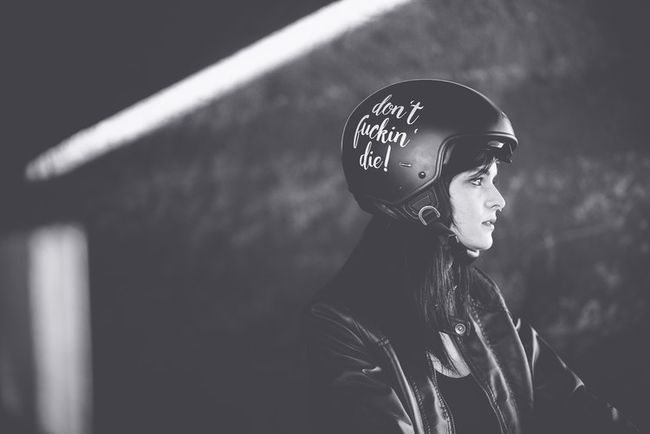
Before you go throwing all that ‘let the rider decide’ stuff in the air, hear me out. The majority of bikers who choose not to wear a helmet have been around the block enough times and consider themselves able to make an informed decision, based on their riding style and skills. Personally, it’s still a big no-no for me.
According to the National Centre for Statistics and Analysis almost 2000 riders a year are saved from a dirt overcoat by wearing a helmet. You can read our full article on safety satistics here.
So, what kind of helmet will you need? The answer to this question entirely depends on what type of riding you do, just ensure that it’s a good fit, and has a DOT sticker as a minimum.
Make Sure it Fits
Not everyone has legs like a stilt walker. Thankfully though, motorcycle manufacturers produce models with low seat height or at the very least, offer lower seats as an optional extra.
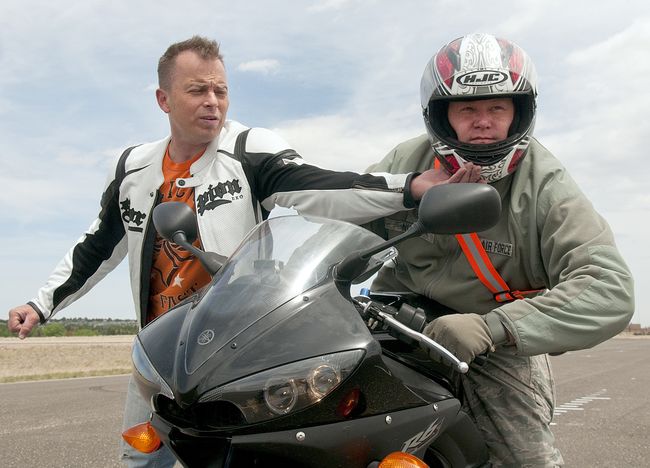
Being able to put both feet on terra firma is a necessary safety requirement to keeping your bike vertical whenever you stop.
Doing research online or scouring bike magazine adverts for your perfect ride is all well and good, but at some stage, you need to get yourself down to your local bike dealer and throw a leg over.
Specified seat height is a good starting point, but until you get behind the bars, you don’t know the actual width of the gas tank or how much of a stretch it is to the bars.
These are both factors that play a part in whether you can control your motorcycle at a standstill. Be aware of the bikes weight too, enthusiasm for a specific make and model can blind us all to our limitations.
Protecting Your Assets
I’m sorry to tell you this, but it’s a matter of when, not if, you go for a slide down the road during your motorcycling career. So the choice of what we wear is essential. As a pro tip, always be prepared for the worst and carry a survival kit or medical bag. I’ve found some excellent medical bags that are small and compact, yet carry all the emergency medical gear you might need. Check out some of the best medical aid kits for motorcycle riders.
To put things in perspective, a typical pair of jeans in12oz denim will last less than half a second under these circumstances, while leather toughs it out for just over 4 seconds.
The same rules apply to jackets, and if we take contact points such as elbows, knees, and hips into consideration, the picture becomes even clearer.
No-one is saying that you have to wear a full race suit, and thanks to advances in fiber technology you may never have to invest in one. However, if you want to stick with denim or even cargo pants, just make sure they have a Kevlar or Aramid liner, many of which come with unobtrusive and removable body armor making them a win-win.
I’ve always been an advocate of the heavy leather jacket, but off the bike, a hot spell can make you feel like you’re carrying the weight of a whole cow on your shoulders. Thankfully, street-styling has caught up with the textile armored jacket.
Locking it Down
Harley-Davidson was the first to tap into the whole aftermarket accessory/optional extra game, and now the likes of Ducati and Triumph are cashing in as well.
Triumph currently has a staggering 685 official items in their catalog, but regardless of make or model, the one that’s worth its weight in gold is ABS. BMW has the credit of introducing the Anti-lock Braking System (ABS) to motorcycles in 1988, but Royal Enfield tried them out as far back as 1958.
What is it that makes them such a big deal, especially in the hands of a novice or returner? Until you’ve learned to control your reactions, which only come with time, grabbing a handful or foot-full of the brake is a pure reaction. It’s also highly dangerous and can easily cause either or both wheels to lock-up.
When the brake is applied regardless of how heavily, the ABS releases pressure on the caliper many times per second. This action prevents the wheel locking and reduces braking time in slippery conditions by up to 30%.
Although at present it’s an optional extra, in all probability as safety regulations become increasingly stringent, ABS will (in the very near future) become compulsory.
Pre-Flight Checks
In the deep endless vacuum of space, motorcycle tires never lose air. Engines don’t leak oil and brake lines certainly don’t get air in them.
Any one of these three occurrences is inconvenient and messy, but the remaining two are potentially dangerous, hence why we should always give our bikes a quick once over, before riding.
For newer riders, the lessons learned at this stage will remain forever, and for returners, it’s a good time to shake off that old bad habit of ‘start-and-go.’ Performing a safety check on a bike can take less than three minutes, and it can save lives and dollars.
Get caught in Birmingham AL with ‘improper brakes’ or ‘improper lights,’ and that’s a wallet-kicking $190 per offense! Here’s what you do, stand next to your bike and fire it up. Squeeze the front brake, checking for pressure on the lever and brake light, and do the same with the rear brake.
Flick the lights on and ensure they are lit up front and back, and while you are there give the horn a push. Finally, check out the tires. A visual inspection around the sidewalls will make sure there are no dinks or gouges. A quick kick will tell you if there’s enough air. If you’re not confident about the tire inflation, use a pressure gauge.
Knowledge is Power
To legally ride a motorcycle you need the correct license endorsement, and this will involve some form of aptitude test. Just because someone hands over a piece of paper saying you’ve passed, it doesn’t make you a motorcycle rider.
Becoming a bike rider takes experience and miles but what you can do is fast track this process. Taking a rider training course will add to your skill base, and supply the type of real-world road craft that you will need.
If you are a returner then a refresher course is a sound idea, you may have ridden coast to coast back in the day, but times along with highways have changed, and you may need to sharpen up those riding skills.
Organizations like the Motorcycle Safety Foundation run a number of different courses with varying skill levels throughout the country. Alternatively, some bike manufacturers run courses including Harley-Davidson’s New Rider Course, available at select H-D dealers.
One way to boost road riding skills off the chart is to take to the dirt. Off-road training schools have been around for years, but the increasing popularity of dual-sport bikes means there are lots of adventure bike courses running coast to coast.
It may seem odd that dirt riding can improve road skills, but believe me, it will. Learning how to spin the back wheel, lock the front and steer into a slide, will give any rider serious control skills and confidence.
Group Dynamics
Riding in groups is an often-overlooked skill and knowing how to do it right is a major deal. Take a look at bike-cops on escort duty who ride together like a well-oiled machine.
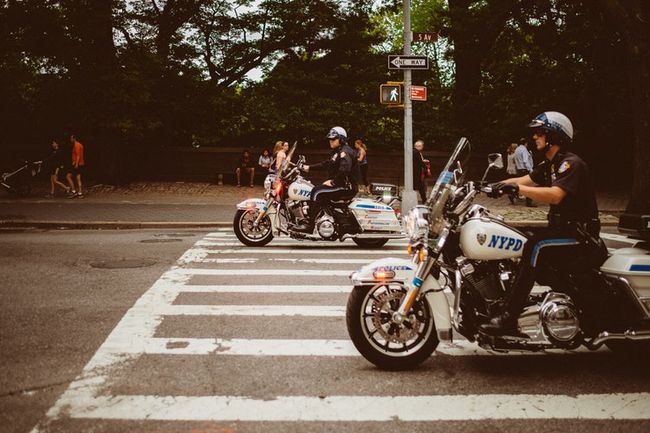
So what’s the big deal with riding in a line anyway? Well, it’s like this, get it wrong, and the potential for calamity is vast. There’s nowhere to go, no time to react and a domino effect is inevitable. It might be worth finding quality motorcycle accident attorneys.
Furthermore, it’s all too easy to get caught up in the excitement of being in a group and ride beyond your comfort zone. Luckily it’s not all doom and gloom, riding with a group of friends whether for a daylong ride-out or better still on tour, is hugely satisfying.
By observing a few simple rules, you’ll get to enjoy the experience and live to tell the tale. Rule one, arrive fully gassed up and ready to rock. Two, find out where you are going and the approximate route. Three, ride in a staggered formation so that if someone slows down too quickly, you have a space to move into safely.
Four, take a cell phone and swap numbers with others in the group, that way if you break down or fall behind you’re not on your own. Finally, rule number five, watch your mirrors; keep an eye on the bike in front, and look further up the line to give you the heads-up on a hazard or sudden braking.
watch your mirrors; keep an eye on the bike in front, and look further up the line to give you the heads-up on a hazard or sudden braking.
Windows to the Soul
Getting a face full of mega-bug like the Carrion Beatle or American Cockroach is no laughing matter. Multiply the weight of the bug by the speed of your bike and the velocity is enough to make a hot mess of an unprotected eye.
Regardless of what kind of helmet you wear, eye protection must always be a priority. Most full face helmets except Motocross styles have a pull-down shield and even an inner sun shade.
Open face or jet style helmets either come with some form of flip-up visor already installed or can take an aftermarket version. Goggles are a popular alternative; make sure to invest in a good quality pair with vented frames. You should also make sure your helmet has a loop and stud at the back to secure them.
Go down the half helmet route and eye protection is even more essential, just don’t be a cheapskate and think those cool imitation mirrored aviators are up to the job.
For motorcycle riding, lenses need to be high quality optically correct polycarbonate. Buy glasses with a range of replaceable lenses for varying conditions, or better still cover all your bases with photochromic lenses that change with the light.
Look On the Bright Side
Check the weather! Once again, we’ve ventured into the land of the glaringly obvious, but when you’re new to the saddle or a returner, it’s all too easy to get carried away in the excitement.
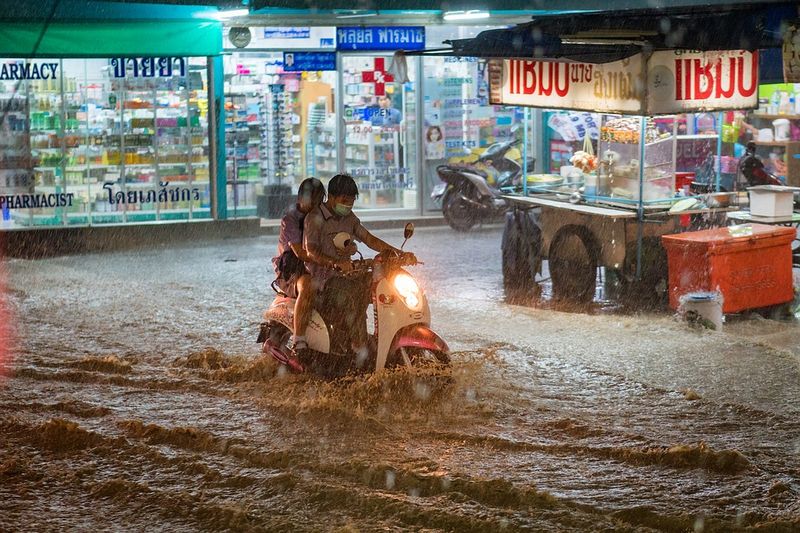
Take time out before you hit the road to see what Mother Nature’s got up her sleeve. It takes mere moments, especially if you’ve got a ‘smart’ cell phone with a weather app.
Regardless of where you live you’re going to get unpredictable or extremes of weather. In Texas, you can go from 80 degrees on the coast to blizzards in the north on the same day.
Oklahoma likes to surprise its bike riders with hailstones as big as tennis balls, and Arkansas’s freak rainstorms are the stuff of legend. There is no need to be a fair weather rider, but not checking out the weather pre-ride, can turn a pleasure into a severe pain in the ass.
Natural Highs
If the Hollister Riot of 1947 went a long way towards demonizing the biker as a boozed-up rebel, then the pot smoking chopper pilots of Easy Rider pretty much confirmed the perception.
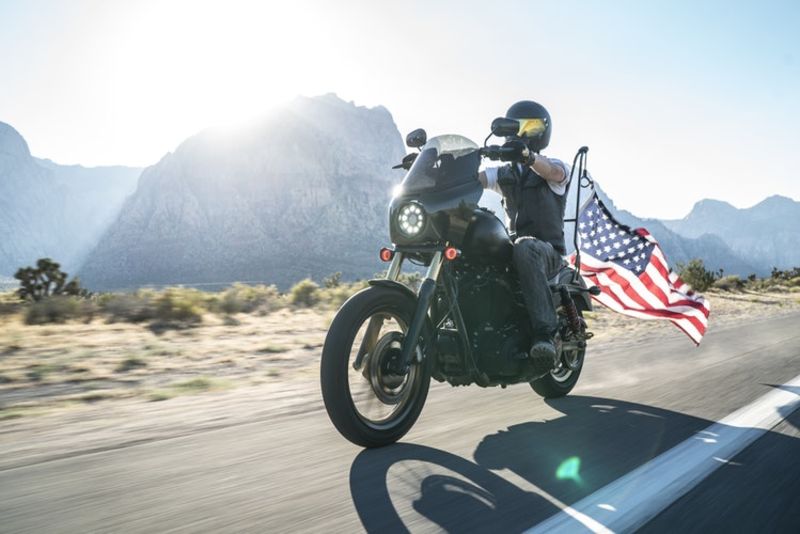
Here’s the thing, bikers don’t need expensive artificial stimulants to get high, Mother Nature has provided them to us free of charge. Open the throttle on a winding stretch of road, and the rush of adrenaline will leave you buzzing.
The feeling of excitement or satisfaction from endorphins released from a good ride is also proof that you don’t need to fill yourself full of chemicals.
It’s a stone cold fact; motorcycle riding demands 100 percent concentration. That’s what makes it such a good stress reliever; there simply isn’t time to worry about anything else.
Don’t ride, drunk or high, leave that for the B-movie actors. Instead, discover the Top 10 Motorcycle Safety Tips for Responsible Bikers.
That Covers it
If I’ve missed any or you have some to add, be our guest and hit the comment box. Remember, learning how to ride safely doesn’t detract from the fun, it makes the fun last longer.

Use a mirror.. any mirror,. You need to know what’s going on behind you and whether the traffic is responding to your bike.
Good point! I guess that’s why mirrors and double-checking the blind spots are so important when doing the drivers license test.